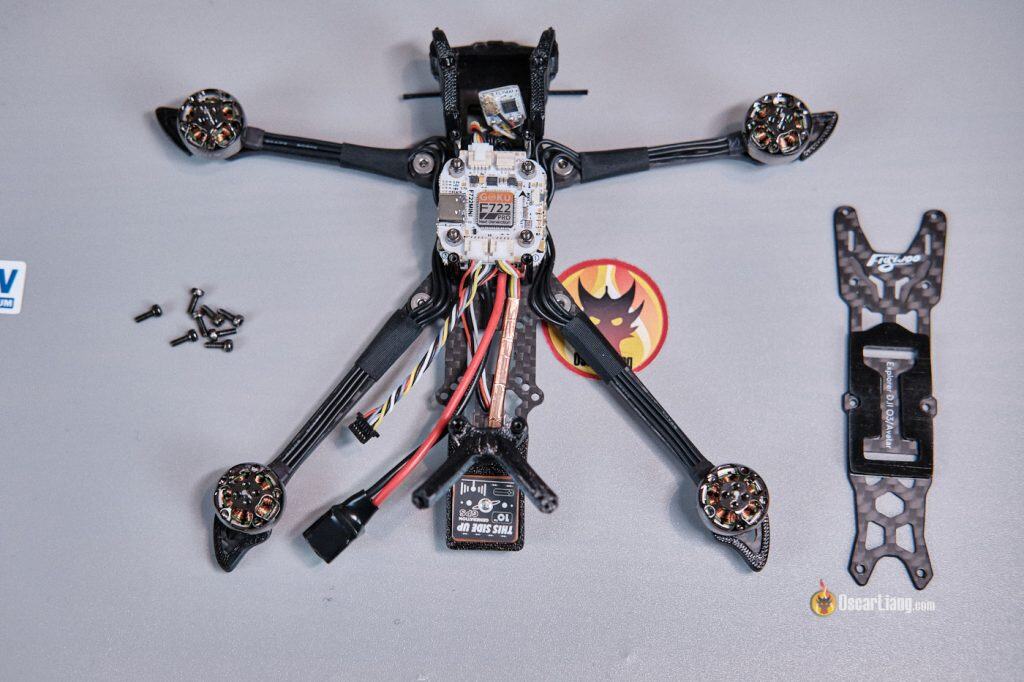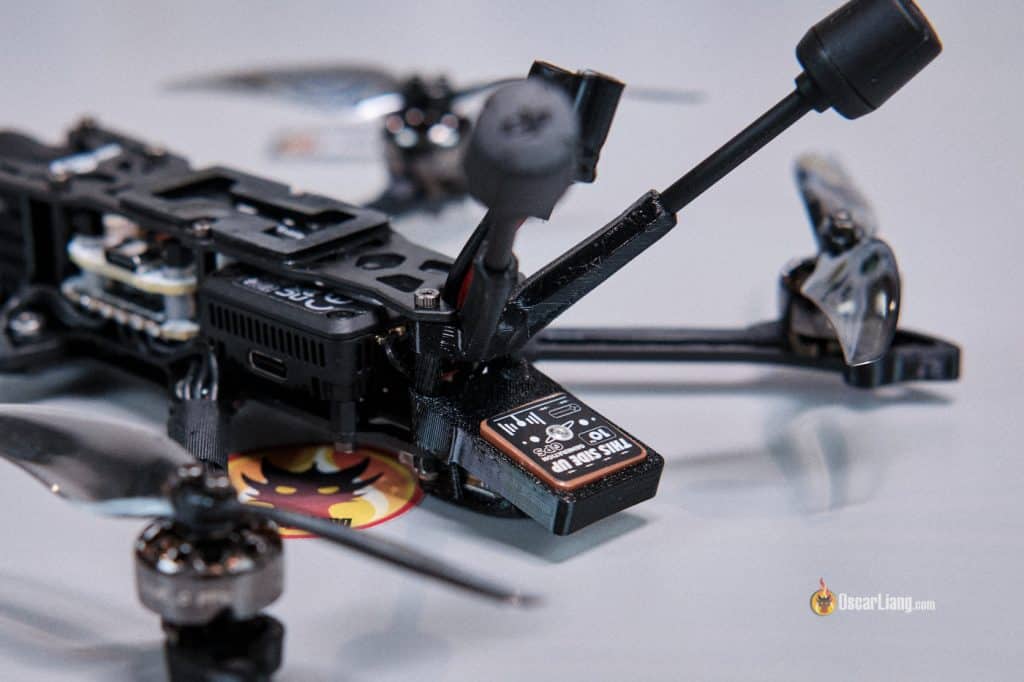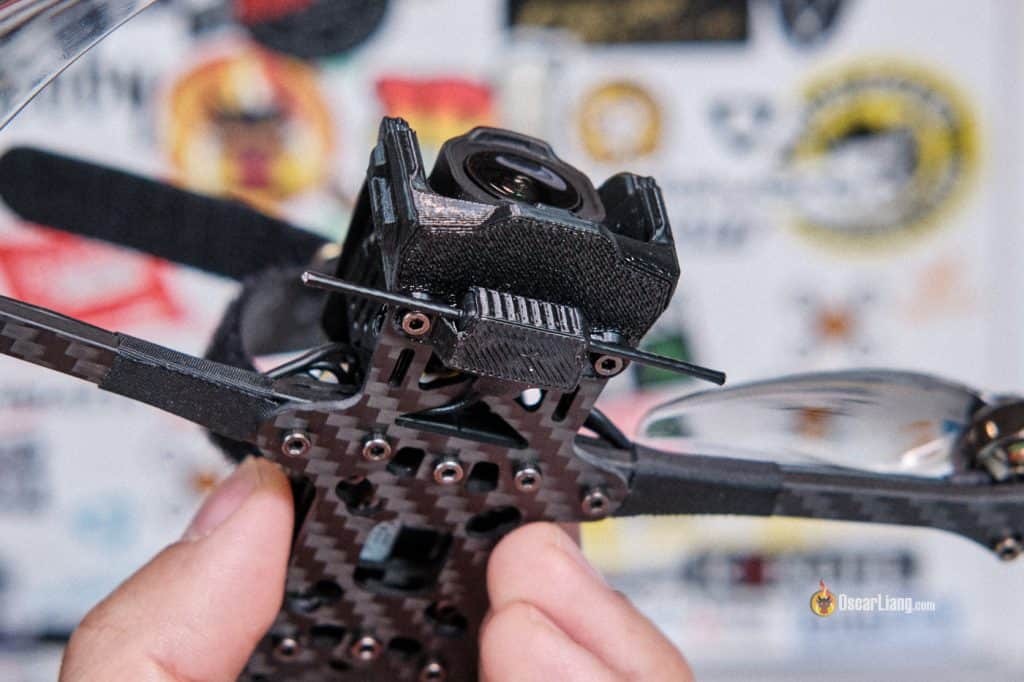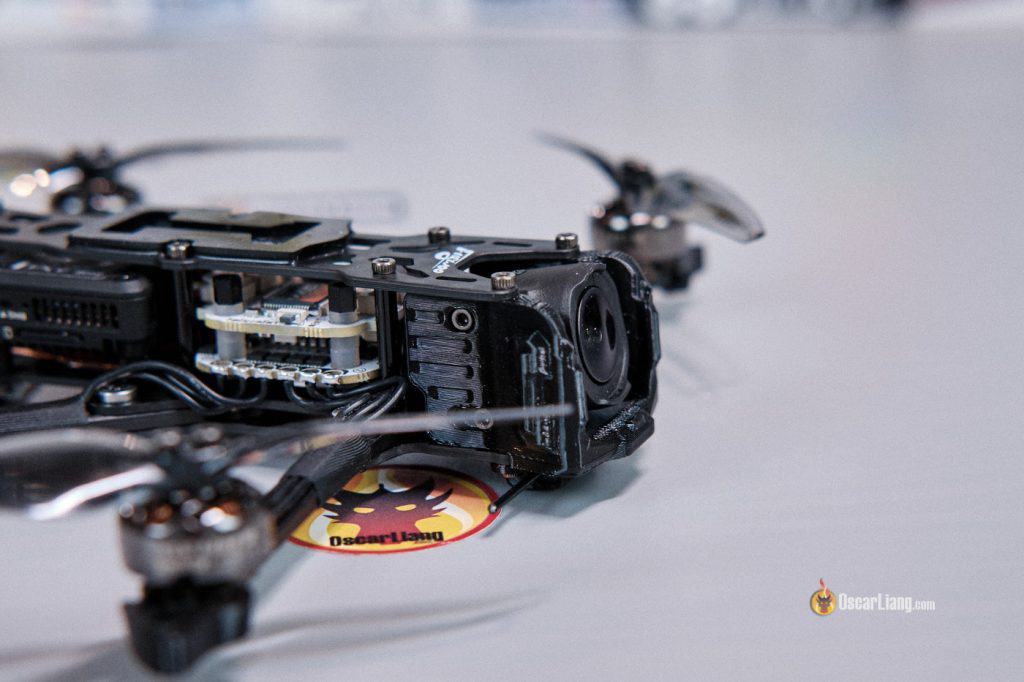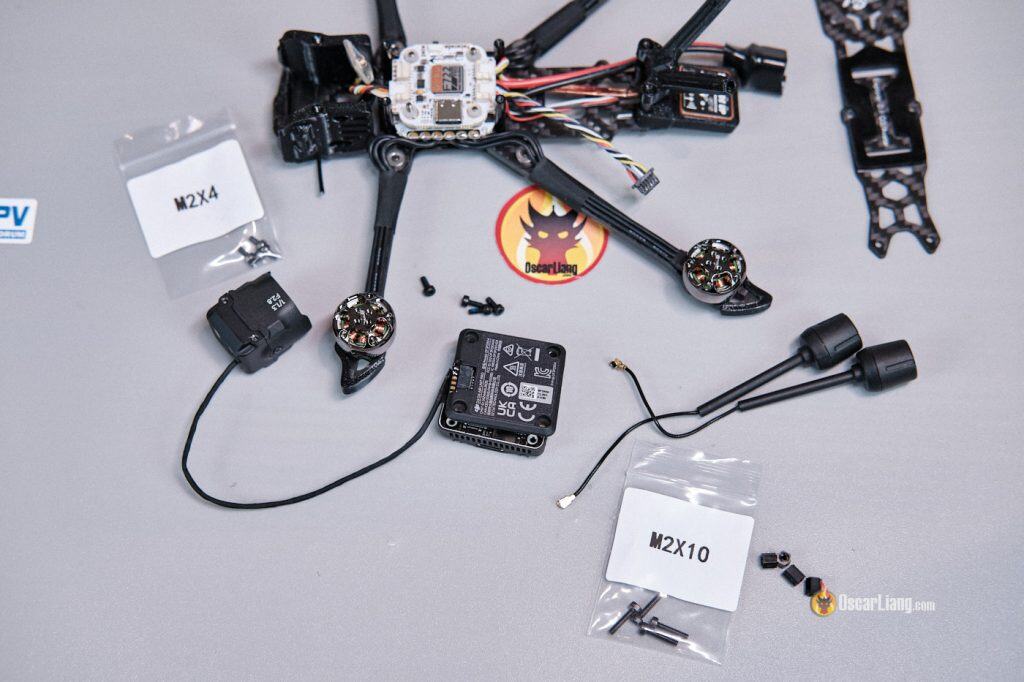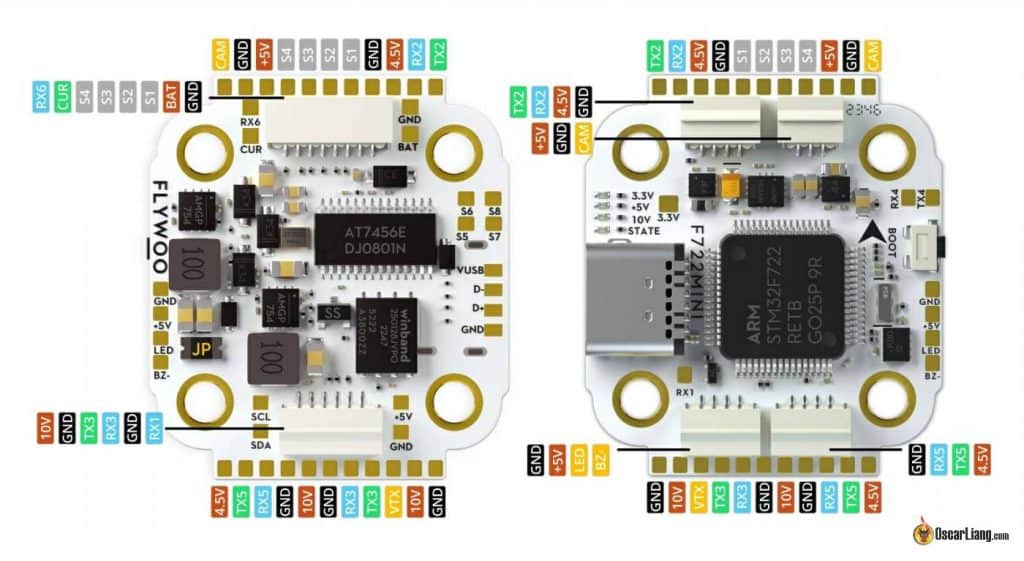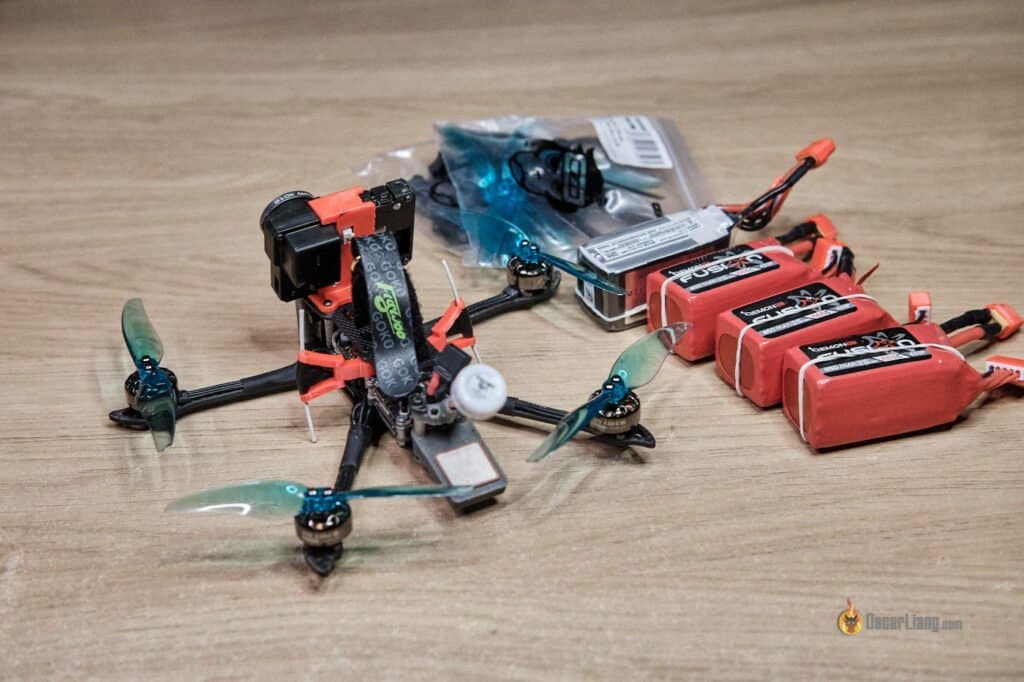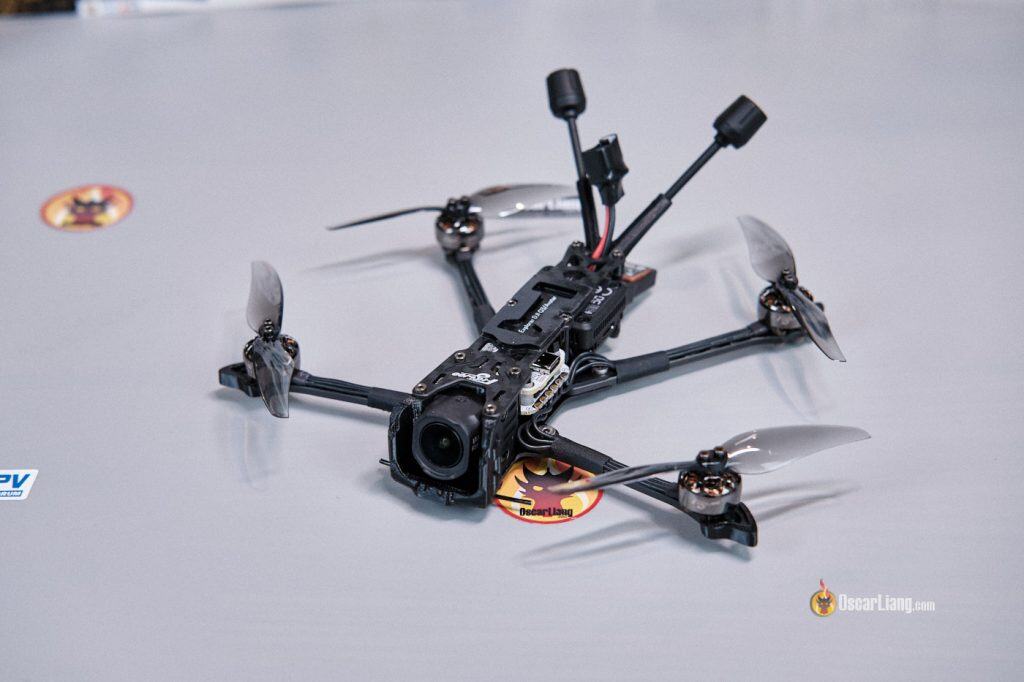I’ve been flying the Flywoo Explorer LR4 for five years, and it stays one in all my favourite drones to take when touring. It’s light-weight and gives distinctive flight time—excellent for long-range exploration and capturing cinematic footage. So once I heard Flywoo had launched a brand new model that includes the DJI O4 Professional, I knew I needed to give it a attempt. On this overview, I’ll share my ideas on the up to date Explorer LR4, its execs and cons, and how one can optimize its flight efficiency and reliability.
Study extra about long-range FPV flying on this information: https://oscarliang.com/long-range-fpv-flying-mini-quad/
A number of years in the past I travelled overseas with the Explorer carrying the Vista + Bare GoPro 6 on this compact setup.
And it was capable of produce this stage of footage, very spectacular efficiency. The O4 Professional is just going to get even higher!
The place to Purchase
You should purchase the Explorer LR4 O4 Professional Version from these distributors:
Observe: You should purchase the Explorer LR4 with or with out the DJI O4 Professional Air Unit. Nonetheless, the model that features the O4 Professional is $270 extra—whereas the O4 Professional alone prices solely $220. That’s a $50 markup! In the event you’re comfy putting in the Air Unit your self, it’s less expensive to purchase the drone with out it and set up the O4 Professional individually. I’ll stroll you thru the set up course of later on this overview.
Equipment embrace:
- 8 × Gemfan 4024-2 Black Props
- 2 × Battery Straps (15x180mm)
- Screws
- Extra 3D printed mounts
Specs
- Body: Flywoo Explorer LR4 O4 PRO Body Equipment
- Flight Controller: Goku F722 Mini
- ESC: Flywoo 45A 32bit 4-in-1 ESC
- FPV System: DJI O4 Professional Air Unit
- Receiver: ExpressLRS
- Propellers: Gemfan 4024×2 Bi-blade
- Motors: Flywoo Nin V2 1404 2750KV
- GPS: GOKU GM10 Mini V3
- Battery Connector: XT30
- Weight:
- 171g (with out battery)
- 239g with a 4S 720mAh LiHV (sub-250g)
- 266g with a BetaFPV Lava 4S 850mAh LiPo
Construct High quality & Design
Virtually the Similar because the Authentic Design
Flywoo hasn’t modified a lot concerning the Explorer’s design because the unique model from 5 years in the past. The primary replace is a modification to the body to accommodate the DJI O4 Professional Air Unit.
For these unfamiliar with the Explorer, it makes use of a deadcat format, which helps preserve the props out of the digicam’s view. The arms are extraordinarily skinny—this drone isn’t constructed for crashing, however somewhat for staying gentle to maximise effectivity and flight time.
The soldering high quality seems to be nice. The motor wires are soldered vertically, conserving the profile low and lowering the chance of wire injury. Antennas are mounted in a V-shape at 90°, which is perfect for sign reception—good consideration to element from Flywoo.
Electronics
Flywoo upgraded the FC/ESC stack from 16x16mm to 20x20mm. The bigger board measurement not solely makes repairs simpler doubtlessly, however the brand new ESC now options 45A 32-bit help—a significant step up from the earlier 13A model. It’s an enormous overkill for this construct (you’ll hardly use 10% of its present score), however hey, having further headroom isn’t a foul factor.
All of the elements are linked to the FC through connectors – no soldering on the FC in any respect.
The receiver shouldn’t be hooked up to something, simply left there hanging freely. With the O4 digicam put in it’s kind of being pressed by all of the wires between the stack and digicam, so it’s not unfastened or something and hasn’t been a priority to this point throughout my testing.
They’ve additionally lastly added a present sensor, which is an enormous plus for long-range flying. Voltage alone may be unreliable—particularly with low C-rated batteries that endure from voltage sag. With a present sensor, you get a significantly better concept of battery utilization and might higher decide when to land.
Because of the tight house, Flywoo needed to solder the capacitor on to the XT30 connector, which is a bit removed from the ESC. The capacitor can be fairly small. Whereas not the simplest setup for noise filtering, it’s higher than nothing. Fortunately, the small motors don’t produce an excessive amount of electrical noise, so this must be high-quality normally. Study capacitor on this information: https://oscarliang.com/capacitors-mini-quad/
GPS Enhancements
Flywoo continues to mount the GPS module on the rear, just below the VTX antennas—a location that I’ve all the time discovered problematic. Within the earlier mannequin, the M8-based GPS would take a very long time to get a 3D repair, and satellite tv for pc counts had been typically low resulting from interference from the close by VTX antennas. The routing of GPS wires beneath the VTX added much more EMI and made matter worse.
This time round, Flywoo tried to handle the problem by:
- Shielding the GPS wires with copper tape
- Upgrading to a more moderen, extra highly effective M10 GPS module
Whereas I nonetheless want they’d moved the GPS away from the VTX fully, these modifications ought to enhance GPS reliability.
Receiver Antenna Mounting
One other design selection I’m not a fan of is how the receiver antenna is mounted.
Whereas this mounting methodology is less complicated for producers and works high-quality for short-range flights (inside a few km), it’s not preferrred for long-range. For finest efficiency, antennas must be mounted vertically. Study extra about antenna mounting: https://oscarliang.com/antenna-positioning/
DJI O4 Professional
The DJI O4 Professional Air Unit is securely mounted on standoffs, leaving clearance for wires beneath. This setup permits for first rate airflow, serving to to maintain the air unit cool throughout flight. Though the O4 Professional digicam is just mounted between easy TPU adapters, I didn’t discover any jello or vibration within the footage, Gyroflow additionally works flawlessly.
One draw back: the digicam tilt angle is very restricted, with a most of round 15 levels. This restricts how briskly you may fly, as greater speeds may have you staring on the floor extra. The restricted angle is because of the body’s compact peak—the O4 Professional digicam is bodily giant, and growing the lean would require a taller body, which in flip would enhance weight, drag and cut back effectivity. That stated, for a gradual cruiser just like the Explorer, this angle is satisfactory.
Onboard Buzzer
Flywoo features a self-powered buzzer—a uncommon function in BNF FPV drones. In case your battery dies or will get disconnected in a crash, the buzzer will proceed beeping for hours, tremendously enhancing your probabilities of discovering the drone.
In the event you’ve by no means used one in all these buzzers earlier than, don’t be stunned when it begins beeping after you unplug the battery—that is anticipated conduct. To cease the beeping, simply press and maintain the button on the buzzer for a couple of seconds to disarm it. In the event you’re merely swapping batteries, you don’t must press the button, merely plugging in a brand new battery will robotically cease the beep.
Flight Efficiency
Right here’s footage from one in all my take a look at flights:
Battery Selection and Effectivity
Relying on battery weight, the Explorer pulls round 6-7A at 50 km/h and seven–8A at 60 km/h—which is impressively environment friendly.
If you wish to keep below the 250g weight restrict, the biggest battery you should utilize could be 4S 720mAh LiHV, which is available in just below the edge and gives round 8 minutes of cruising flight time. LiHV batteries are barely extra energy-dense than common LiPo, supplying you with a bit extra flight time, see my testing right here: https://oscarliang.com/lihv-battery/
With some modifications—akin to eradicating pointless elements—you would possibly have the ability to run 4S 850mAh LiPo and nonetheless keep sub-250g. This might doubtlessly offer you over 10 minutes of flight time and as much as 7 km of complete flight distance.
For optimum flight time, the 4S 18650 Li-ion battery pack is the best way to go. It may well present virtually half-hour of flight time (primarily based on my testing with the earlier model of Explorer), although it will increase the general weight to round 365g. Ideally, it’s best to construct your personal pack utilizing high-quality cells. I like to recommend the Molicel P30B 18650 cells, which I’ve examined right here: https://oscarliang.com/best-18650-li-ion-battery/#Outcomes-and-Suggestions. You too can purchase pre-built Li-ion packs, however they typically use cheaper cells, right here’s an inventory of really useful choices: https://oscarliang.com/li-ion-battery-long-range/#Shopping for-Prepared-Made-Li-ion-Battery-Packs
Personally, I really like cruising at round 40–45% throttle (45–50 km/h) with 4S 850mAh, or 50% throttle (50–60 km/h) with the 4S Li-ion pack. This appears to be the optimum throttle vary for maximizing flight time.
Cinematic Smoothness
This drone flies prefer it was on rail, very locked in and secure. Within the flight footage, I used to be flying in 20 MPH gusts, and whereas the drone did drift fairly a bit (resulting from its gentle weight), it didn’t wobble like many smaller micros do. That stability may be very useful for capturing cinematic footage.
Freestyle Functionality
With hover at 36% throttle and a high velocity of 105 km/h utilizing a 4S 850mAh LiPo, the Explorer shouldn’t be a quick drone. Throughout excessive maneuvers, it tends to wobble and expertise instability because of the restricted energy of the motors.
Let’s be sincere—the Explorer feels underpowered. The 1404 motors are thought-about very small for 4-inch props; they’re generally utilized in 2.5-inch freestyle drones, and in my expertise, they even wrestle with 3-inch props! However bear in mind, this drone is constructed for effectivity and endurance, not uncooked energy, so it is smart.
Whereas it’s no freestyle beast, it could deal with primary strikes like split-S, energy loops, and inverted yaw spins simply high-quality. You simply want to regulate your expectations—this isn’t a 5-inch ripper.
Noise
The Explorer is surprisingly quiet. It’s not silent, but it surely’s a lot much less intimidating than a 5-inch freestyle FPV drone. This makes it well-suited for flying in parks or city areas with out drawing an excessive amount of consideration.
Sturdiness
As talked about earlier, Flywoo hasn’t modified a lot concerning the Explorer’s body design because the unique model—and primarily based on my expertise, it’s fairly fragile. I’ve damaged arms in gentle to medium crashes—not even onerous hits—resulting from how skinny the arms are. So long as you’re conscious of its fragility and follow cruising as a substitute of aggressive flying, it’s high-quality.
GPS and Rescue Mode
Slight disappointment right here: the GPS takes fairly a very long time to get a repair from a chilly begin—about 6 minutes to amass 8 satellites. The max satellite tv for pc depend was round 19. I think the low GPS efficiency is because of its mounting location—it’s below the VTX antennas.
That stated, Betaflight GPS Rescue Mode works effectively. I’d nonetheless suggest a couple of modifications to make it higher—akin to adapting “throttle fallback” (see my Rescue mode information for element) and lowering return velocity, and so on.
The way to Setup
Putting in DJI O4 Professional
I purchased the Flywoo Explorer with out the DJI O4 Professional Air Unit, so I needed to set up it myself.
Since that is fairly a small quad, engaged on it is a little more difficult in comparison with bigger drones like a 5-inch, but it surely’s nonetheless doable with persistence. It took me about half-hour. No soldering is required—simply mount the digicam, air unit, and antennas, plug within the cable, and also you’re good to go. Listed here are the steps.
Take away the antennas from the DJI O4 Professional Air Unit.
Set up the antennas into the TPU holder.
Set up the 4 standoffs behind the body for mounting the air unit.
I most popular to run the digicam cable below the FC, so I eliminated the FC from the stack quickly.
Set up the O4 Professional digicam within the body.
Reattaching the antennas onto the air unit, plug within the cable from the FC, and mount the air unit onto the standoffs. That’s it!
There’s no must take away the SBUS wire within the O4 Professional cable, as a result of it’s linked to UART1 (particularly RX1) on the flight controller. For the reason that ExpressLRS receiver is linked to UART2, there’s no battle so long as you’re not utilizing UART1 for the rest. In the event you plan to make use of UART1, it’s best to take away the SBUS wire within the O4 cable.
Earlier than powering the drone for the primary time, plug in a smoke stopper such because the Vifly Shortsaver, and join a battery and take a look at the drone and see if it powers up accurately. You need to hear the ESC/motor initiation beeps.
Activate the O4 Professional should you haven’t already: https://oscarliang.com/how-to-setup-dji-o4-pro/#Activation
Pair the DJI O4 Air Unit together with your goggles – Information: https://oscarliang.com/how-to-setup-dji-o4-pro/#Pairing-DJI-Goggles-3-with-O4-Air-Unit-Professional
Firmware
The flight controller (FC) board goal is FLYWOOF722PROV2, and it comes preloaded with Betaflight firmware model 4.5.1. For inventory CLI Diff, see right here.
Right here’s the FC pinout diagram.
ESC Firmware: F4A_4IN1 – AM32 2.16. Listed here are the default ESC settings.
ELRS Receiver Firmware Goal: Flywoo EL24E 2.4GHz RX, firmware model says “merge 481945 CE_LBT”, unsure what model that is but it surely binds high-quality with my radio which is on ELRS V3.5.
Betaflight Setup
What Might Be Improved
By eradicating pointless components, I’m hoping to cut back the burden by one other 15–16 grams, which might permit me to make use of a 4S 850mAh LiPo and nonetheless keep below the 250g restrict. This is able to permit 10+ minutes of flight time, which is great for exploring new spots when touring. If there’s curiosity, I can write a submit detailing these modifications—let me know within the feedback!
The FC stack may benefit from utilizing plastic nuts as a substitute of metallic lock nuts. Not solely are metallic nuts heavier, however they’re additionally tough to take away whenever you need to work on the FC.
As talked about earlier, mounting the receiver antenna vertically could be preferrred. I’m not doing that simply but as a result of I plan to improve to a range receiver, with antennas mounted on each side of the body—similar to I did with the unique Explorer. With that setup and simply 100mW on my T-Lite V2 radio, I used to be capable of fly out 3km and again.
It’s a little bit of a missed alternative that Flywoo didn’t use their GOKU Nano GPS with an onboard compass. With Betaflight 4.6 bringing place maintain function, this may have been an amazing addition. I’m additionally not a fan of the present GPS mounting location—beneath the VTX antennas. I feel it might be higher positioned on the entrance, above the FPV digicam, and away from all of the antennas.
Additionally, there’s no guide included, and the screw baggage aren’t labeled for his or her goal—solely by measurement. It could have saved a while in the event that they had been labeled (e.g., M2x7 for propellers, M2x4 for O4 Professional digicam, and so on.).
Some Betaflight settings might have been configured extra thoughtfully for the Explorer. For instance, GPS and OSD settings had been left at default. Whereas Flywoo did present a customized PID tune, the filter settings had been largely left untouched. There’s positively room for enchancment in filters, PIDs, and Rescue Mode configuration. I’ll be posting my configuration on Patreon.
Additionally price noting: the present sensor isn’t calibrated correctly – it overestimated present draw. I like to recommend setting the present scale to 440.
Ultimate Ideas
I’ve been an enormous fan of the Explorer LR4 from Flywoo for years—it’s a incredible platform with a great deal of potential. There’s nonetheless room for enhancements, I want Flywoo had carried out extra than simply improve the FPV system. However general, the Explorer LR4 with the DJI O4 Professional is a incredible long-range FPV drone, particularly for many who journey so much and have weight necessities. I’d completely suggest it.
You should purchase the Explorer LR4 O4 Professional Version from these distributors:
Professionals
- Extremely environment friendly – gives virtually half-hour of flight time with Li-ion battery
- Beneath 250g with a smaller battery, but nonetheless gives as much as 8 minutes of flight time
- No want to hold a GoPro because of the DJI O4 Professional
- Very compact and nice for touring
- Flies easily out of the field
- Rescue mode works instantly (solely minor tweaks wanted for optimization)
Cons
- Takes a very long time to get a GPS repair from a chilly begin
- Lacks energy and freestyle agility
- Fragile construct – not preferrred for rookies and bashing/crashing
- Over 250g when utilizing bigger batteries for prolonged flight time
- Drifts so much when it’s windy in comparison with bigger 7″ lengthy vary quads









